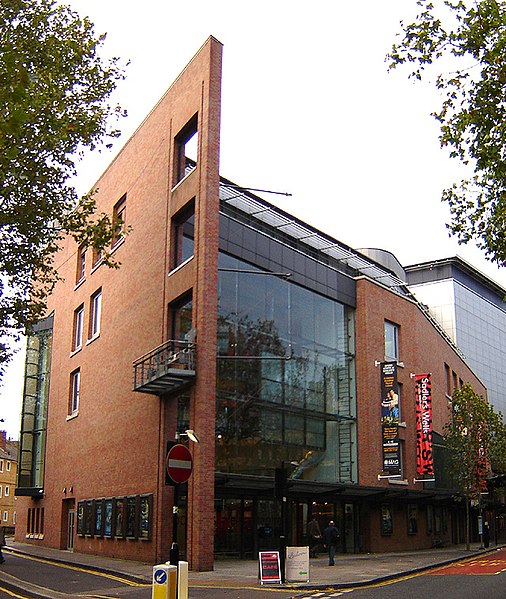 |
| Author: Canuckguy Source: Wikipedia Copyright released by the author |
In the foreword to the programme for this year's triple bill, Cassa Pancho, the founder and artistic director of Ballet Black writes:
"I am often asked why I started Ballet Black. I don't have a perfect answer, even after our sixteen years, but in short it is all about the D word, diversity. I believe diversity on stage inspires diversity at the beginning of the classical ballet food chain, in local ballet schools. That in turn fuels the number of black and Asian students attending vocational school, which leads to more culturally diverse artists following a professional career in dance. From there, those diverse dancers can become teachers, choreographers, technicians, designers, managers, decision makers who will change the shape of dance. Finally, diversity on stage - and off - means the same thing for the audience, put it on your stage. But top down or ground up approaches are not effective on their own. Real diversity will only happen when you work in both directions at the same time, by giving a platform to professional dancers working across the globe today, whose very existence will inspire the tiny tree and four year olds to plié and skip for the first time in their local church hall."Cassa is surely right. The diversification of which she writes is important not just for professionals, students and audiences from Africa, Asia and the African and Asian diasporas but for the future of dance on stage generally and ballet in particular as an art form and for everyone who loves that art regardless of his or her individual ethnicity.
Nearly three years ago to the day I answered an article by David Lister entitled Ballet Black is a wonderful company. But it's a shame on the arts that it still exists 7 March 2014 in which he wrote:
"Ballet Black has been delighting crowds and critics at the Royal Opera House this week. The company, founded in 2001 to create opportunities for dancers of black and Asian descent, has, according to our critic’s review, “never looked better”. They are good, so good that I want to pay them the ultimate and richly deserved accolade – they should be abolished."In David Lister's Post on Ballet Black 9 March 2014 I wrote:
"It is clear that Mr Lister abhors racism like all right thinking people. His article is no doubt written with the best of intentions but he is wrong. Ballet Black has never been more necessary than now. Not because black or South Asian dancers cannot get into other ballet companies as, clearly, they can and do. But because Ballet Black is claiming an art form that began in the courts of renaissance Italy and developed in imperial Russia for all cultures including (but by no means exclusively) kids from Bradford, Brixton and Moss Side."The process of diversification to which Cassa refers has only just begun in the United Kingdon. Yes, there are fine dancers of African and Asian heritage in all the leading dance companies and there are also more children of African and Asian heritage in local dance and vocational ballet schools, but there is still a mountain to climb with audiences, even for the performances of Ballet Black.
In climbing that mountain we have to be very careful to avoid representing ballet as a fundamentally European art form in which African and Asian heritage artists and audiences are invited to participate because that is not how it is. It is more like a language that can be adapted by artists of any culture to express music, literature and thought from any source. An analogue of the diversification process. perhaps. is jazz. That came to the world (albeit indirectly) from Africa but was embraced not just by artists of European heritage but by those of other cultures (see Audio slideshow: Bombay's jazz age 27 Jan 2012 BBC website).
Unless the process of diversification accelerates ballet risks becoming a predominately white, elitist museum piece and that would be a tragedy for everybody and a betrayal of a beautiful art form. The process will not be complete even when every company and every dance school in the UK becomes representative of the population as a whole because diversification is an international imperative. That is one of the reasons why Ballet Black and companies with a similar mission in this country and abroad are so precious and so necessary.
Changing the subject, I was at the last night of Ballet Black's Barbican season yesterday and I have never been more delighted. At the risk of Cassa's gentle reprimand "Well you always say that, don't you" I repeat what I have said many times in this blog, Ballet Black have never danced better. Everybody around me in the auditorium (remember, this is stuffy old London - not Amsterdam) leapt to their feet. The applause was deafening. I will review last night, of course, but the lead review will come from the distinguished journalist, Joanna Goodman. We shall also publish a splendid report by David Murley of last week's Little Red Riding Hood workshop by Annabelle Lopez Ochoa.
Altogether, we have a lot of good things to say about Ballet Black and for once I won't be the only one saying them.



